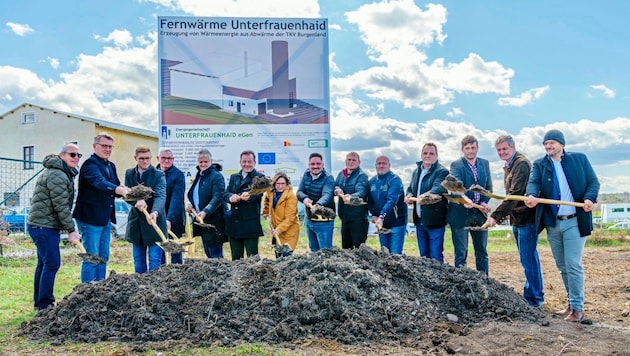For the environment
Animal carcasses: a new approach to energy supply
An unusual project in the name of environmental protection: rendering becomes district heating. 85 percent of the heat required for Unterfrauenhaid is supplied by rendering. The background.
The board of Energiegemeinschaft Unterfrauenhaid eGen worked with the market town for a year and a half to implement this three-million-euro project, which is fully focused on sustainability. Now the time has come.
A new start
The starting point is Tierkörperverwertung Burgenland, which processes almost 200 tons every day into bone meal and fat in a drying process. "The end is a new beginning" is the motto. This is because the waste heat generated in the work process is to be directed to a heating plant in future and used effectively.
"Smart alternative"
A heat extraction plant is being built at the rendering plant site for this purpose. "The introduction of district heating in Unterfrauenhaid offers a smart alternative to gas and oil. End consumers benefit from maintenance-free heating and favorable tariffs. They are safe from price fluctuations on the global market," emphasizes Alexander Freiberger, Chairman of the Energy Community.
Customers also save on maintenance and chimney sweep costs. The pipe network stretches over five kilometers. Excavations began in the summer of 2023.
Both the heating plant and the installed pipe system are designed in such a way that the entire village could be supplied.
Projektleiterin Stefanie Imre
70 properties included
All public buildings, a housing estate and private households will be connected to the network. In the first expansion stage, this will affect 70 properties. 85 percent of the heat required is supplied by the rendering plant, with the remainder coming from a wood chip boiler in which damaged wood from the region is burned.
"The current developments clearly show how important it is to focus on sustainable solutions. This is reflected in the popularity among the population, who have appreciated the security of supply since the energy crisis," explains Mayor Thomas Niklos (ÖVP).
Carcasses for industry
Incidentally, the rendering plant processes more than 50,000 tons of carcasses, slaughterhouse waste and expired meat from supermarkets every year. The end products are bought by industry. Animal fat is turned into biodiesel and the meat and bone meal, which has almost as much calorific value as brown coal, is sold to the cement industry.











Kommentare
Liebe Leserin, lieber Leser,
die Kommentarfunktion steht Ihnen ab 6 Uhr wieder wie gewohnt zur Verfügung.
Mit freundlichen Grüßen
das krone.at-Team
User-Beiträge geben nicht notwendigerweise die Meinung des Betreibers/der Redaktion bzw. von Krone Multimedia (KMM) wieder. In diesem Sinne distanziert sich die Redaktion/der Betreiber von den Inhalten in diesem Diskussionsforum. KMM behält sich insbesondere vor, gegen geltendes Recht verstoßende, den guten Sitten oder der Netiquette widersprechende bzw. dem Ansehen von KMM zuwiderlaufende Beiträge zu löschen, diesbezüglichen Schadenersatz gegenüber dem betreffenden User geltend zu machen, die Nutzer-Daten zu Zwecken der Rechtsverfolgung zu verwenden und strafrechtlich relevante Beiträge zur Anzeige zu bringen (siehe auch AGB). Hier können Sie das Community-Team via unserer Melde- und Abhilfestelle kontaktieren.